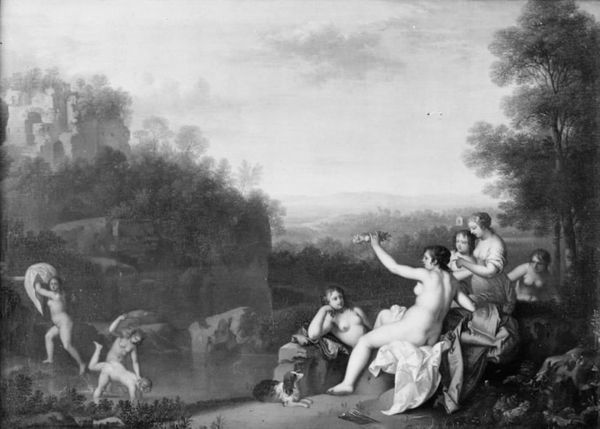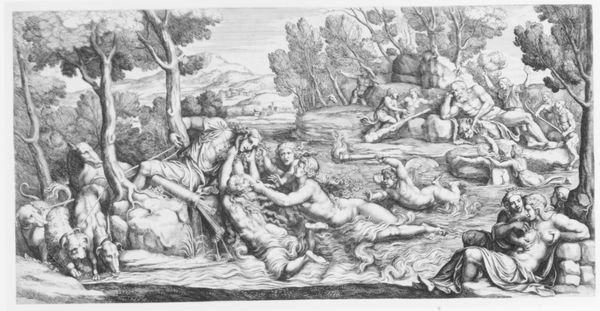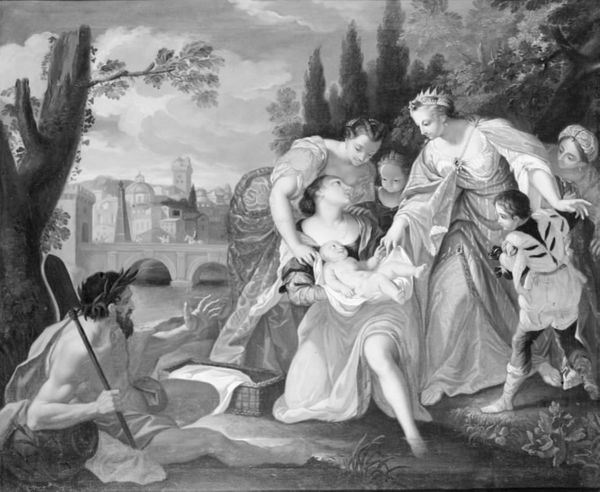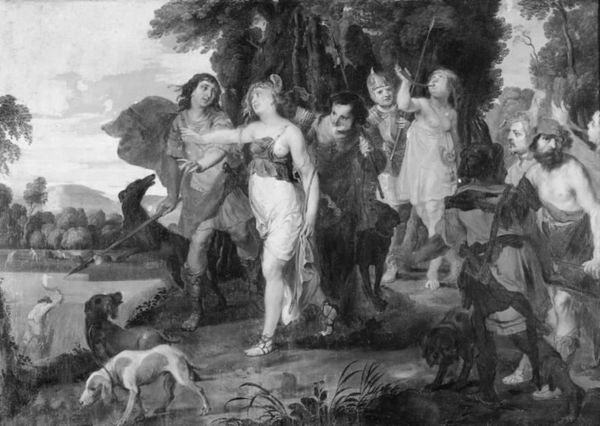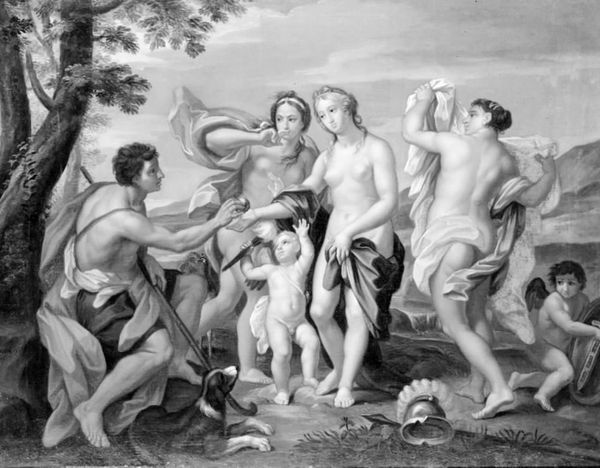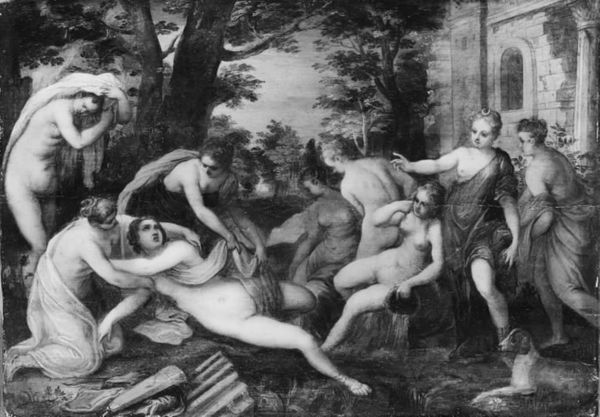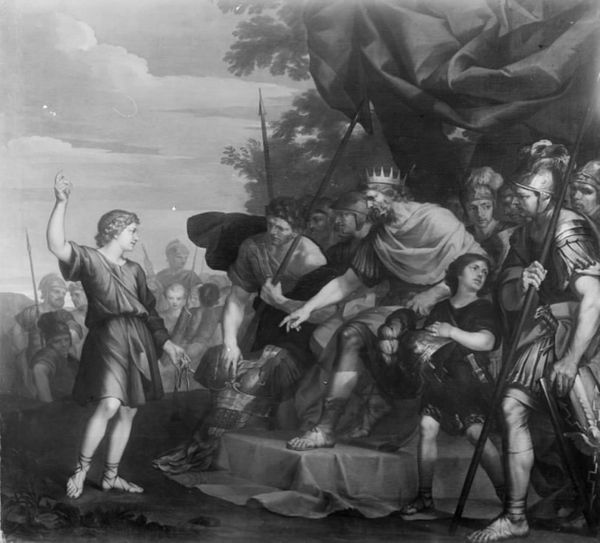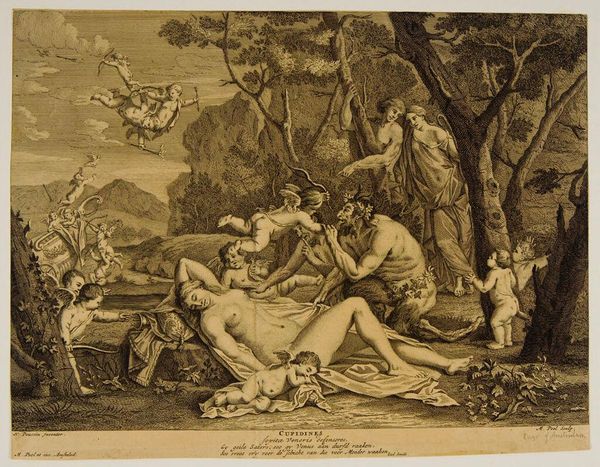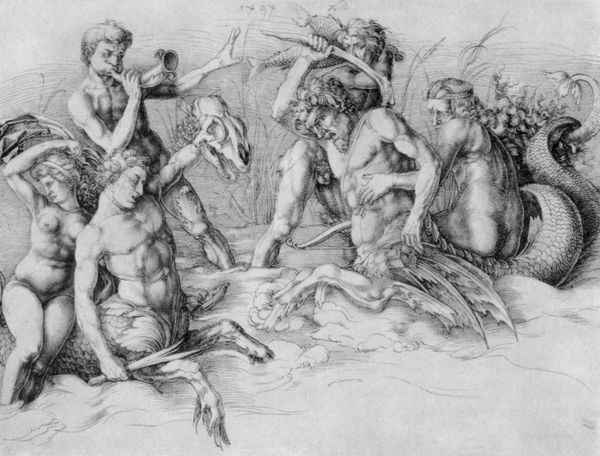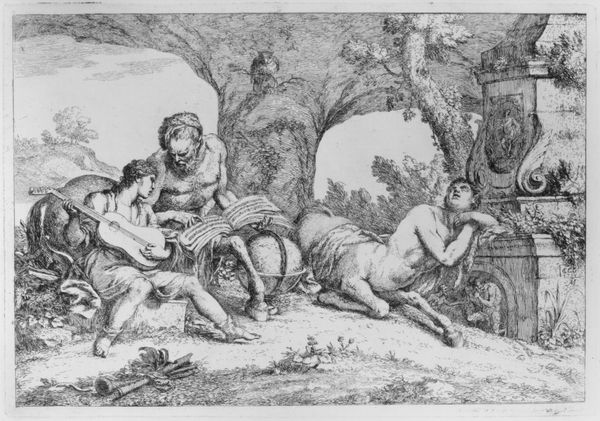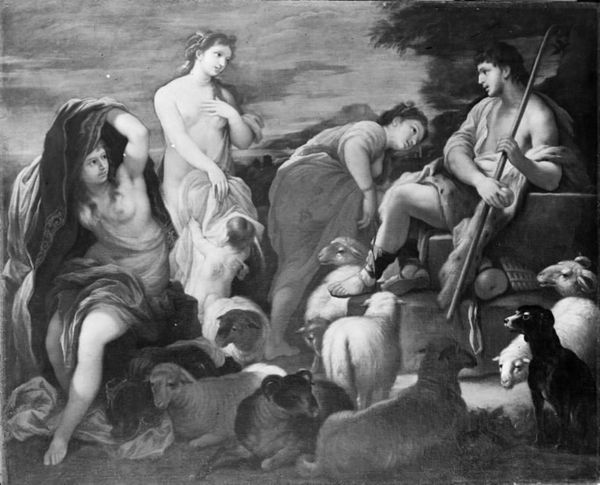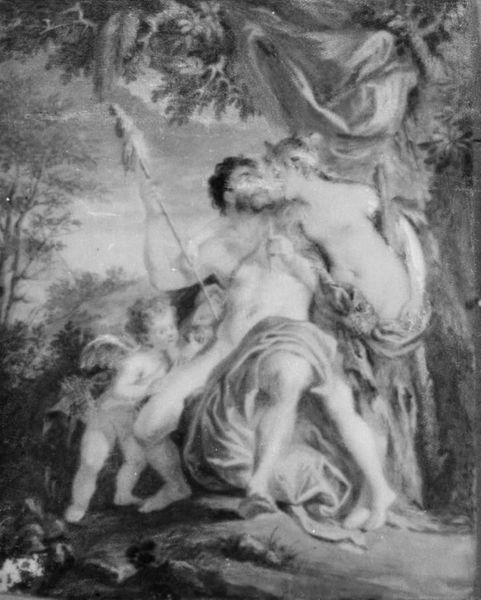
Latona forvandler Licias hyrder til frøer. Motiv fra Ovids "Metamorfoser", VI sang 1686 - 1738
0:00
0:00
painting
#
allegory
#
baroque
#
painting
#
landscape
#
figuration
#
history-painting
Dimensions: 98 cm (height) x 147 cm (width) (Netto)
Curator: Immediately striking! So dynamic and with a great sense of impending doom. Editor: Indeed! We’re looking at “Latona Transforming the Lycian Peasants into Frogs,” a painting rendering a scene from Ovid's “Metamorphoses” by Hendrik Krock. It was produced sometime between 1686 and 1738 and currently resides here at the SMK. Krock has certainly captured a dramatic moment. Curator: The dramatic gestures, especially Latona’s raised arms, amplify the scene. Look at the shepherd’s arms raised to shield himself, and the twisting bodies… The symbol of metamorphosis, literally being turned into beasts for their transgressions. Editor: Absolutely, and transformation is such a rich theme. Frogs have always carried symbolic weight: fertility, transition, uncleanness. Considering this moment in light of political allegories which was rife at the time, how does such a visceral depiction underscore the hubris of commoners challenging the divine or noble? Curator: Well, Ovid’s tale itself reflects the sociopolitical landscape of his time, with the emperor embodying the divine authority. Krock's piece was created amidst struggles between the Danish crown and nobility—the peasant's fate could symbolize the perils of opposing those in power. Remember that artworks like this had a very public facing purpose at the time. Editor: True, history remembers those that wield power and leave indelible marks. See how Latona herself, though seemingly powerless, carries herself like the mother of Apollo and Diana! One can see the deep significance of motherhood as a link to future divinity or influence. The painting almost implies her act of revenge stems from a very natural, very powerful source: defending her children. Curator: An astute observation. Krock definitely captures the cultural reverence afforded to motherhood. He presents the tale as more than divine wrath—it's primal. Editor: Looking closer at the figures and the lush backdrop, I am captivated anew. The landscape itself feels… watchful, a silent witness to the eternal struggle between power and the powerless. It truly speaks volumes about our enduring need for symbols, archetypes, and moral lessons. Curator: I find myself wondering what other stories the museum may display along this one, I can only imagine the connections and contrasts we could discuss in turn.
Comments
No comments
Be the first to comment and join the conversation on the ultimate creative platform.
